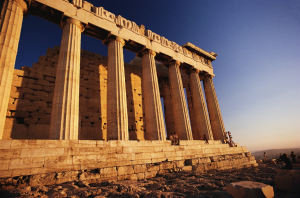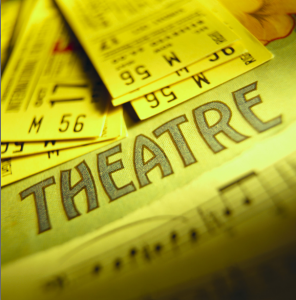Slowly, step-by-step the many pieces of the show come together. By applying the same basic framework to any event, I feel comfortable coordinating, organizing, and directing any program.
The more I practice, the more efficient I become. In using time wisely to prepare for an event, I get the framework in place and then add the details.
In this short series on how I coordinated our school’s live history fair, I broke down my 6-step plan into three separate posts. In Part 1, I outlined the learning and gathering stages. Next in Part 2, I detailed the organizing and delegating phases. Today, I will complete this series with the last two steps: presenting and executing.
STEP FIVE: PRESENTING
After delegating the tasks, I did not sit back and wait for problems to arise. Heading off problems with a plan saves energy and time.
As the separate parts started coming together, I focused my attention on the program. With the sequence complete, I needed to create a fluid presentation that flowed from act to act without awkward pauses or confusion.
Timing the Event
I began evaluating the time needed for this event. If everyone’s performance took the maximum allotted time, then our program would last 2-3 hours. Yikes!
During the time I was working on fitting all the acts in the shortest amount of time, I saw the music teacher at school. She expressed concern that the music would clash with the class presentations and suggested moving her music selections to our end-of-the-year awards assembly.
Considering her option, I took the idea to our administrator and my good friend, who never crushes my ideas – no matter how outlandish they are. 🙂 After a few rounds of pros and cons, we removed the music selections from this program bringing the time frame back to a reasonable 1-2 hours.
Selecting Music
Without the music presentations, I went back to my original plan and readjusted the program. Now, I could add in music and visual elements to create a fluid presentation.
Going to my CD stand, I chose the soundtrack from Gettysburg. This music is instrumental, calm, and historical. The purpose of the music was two-fold:
1. To signal the change between acts, and
2. To unify the program without the audience sitting in silence during the transitions.
In keeping the music simple, the audio/visual volunteer only needed to fade the music up and down. No selection changes made this option the best for our performance.
Choosing Visual Elements
The second element was the visual connection. To do this, I chose two forms:
1. The Program: This two-page pamphlet indicated the order of events, the names of the students, and recognition for those who gave of their time. This program provided a visual element for each audience member before, during, and after the presentation.
2. Slides: Designating a slide per act allowed the audience to follow along in the program. The teachers and students chose one picture or collage to introduce their presentation. (When I presented this idea to my friend, she willingly offered to create the slide show for me. She did a fantastic job!)
With the timing reasonable, the music selected, and the visual elements chosen, the program pieces fit together. Whew!
STEP SIX: EXECUTING
The 2-month long planning came down to executing the program. For this event, I blocked out a couple of mornings to come watch the classes practice.
Rehearsals
During these practices, I made notes of their props and assigned them a home. As I watched other classes, I could let them know that a Trojan Horse would rest on the corner, a castle stayed on the stage left side, or the screen for the slides covered the back wall.
The rehearsals went well, and I stepped in to aid with castles and crowd control for a couple of the acts. Nailing down the details during the rehearsals and staying flexible resulted in a wonderful performance.
Performance
On the evening of the performance, two upper school students did not arrive. Upon hearing this news, I asked the audio/visual operator to remove or skip those slides. However, I forgot to tell our third grade teacher, whose act followed one of the absent students. Oops!
My mistake caused a slight delay, but the program went beautifully with a reception and art display available before and after the 1 hour and 15 minute presentation.
Through the ups and downs, this program was my favorite of the year. Of course, I am a little biased since I invested my time and energy into the presentation, but the feedback received confirmed my assessment.
As you plan events (small and large), concentrate on the planning. With a framework in place, you can focus on creating a tightly unified event. With simple elements, like one score of music and one slide show, an event can emit unity in light of its differences. Happy planning while using time wisely!
Question: For what event are you planning?



